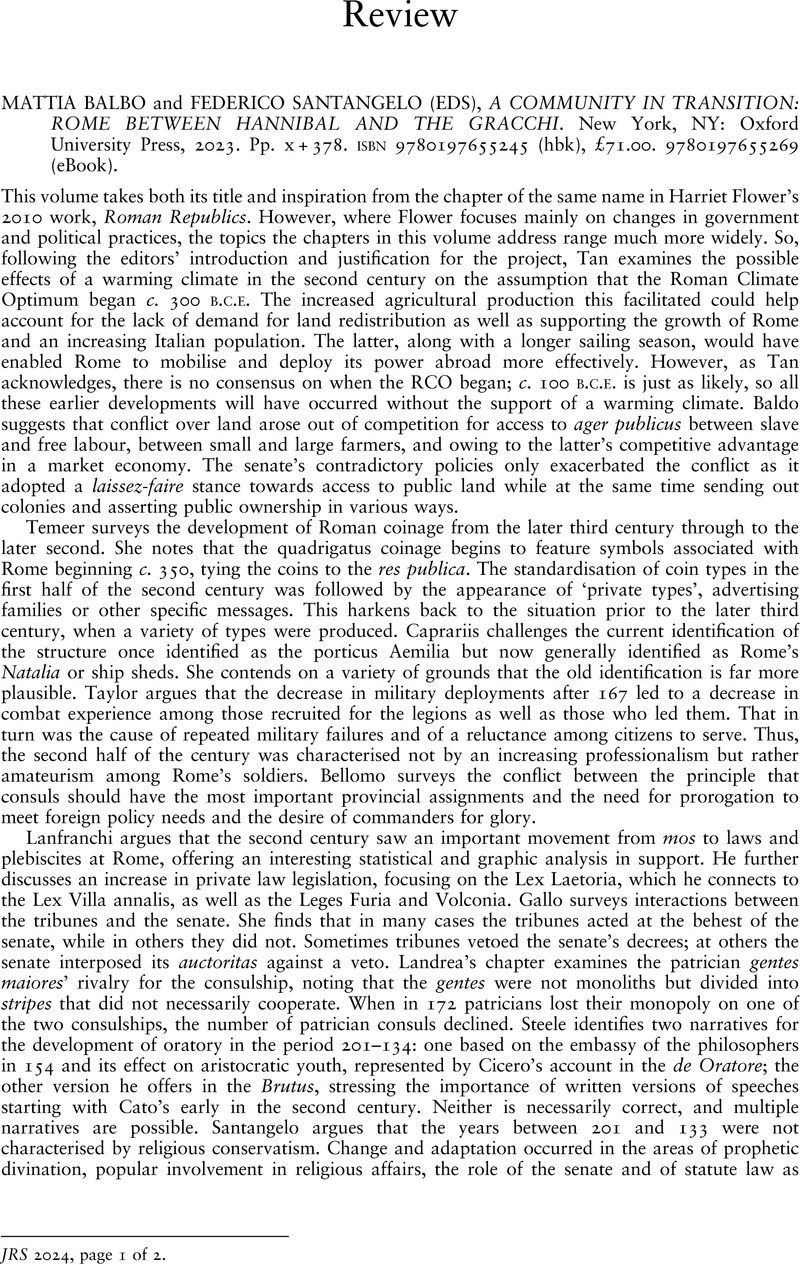No CrossRef data available.
Article contents
MATTIA BALBO and FEDERICO SANTANGELO (EDS), A COMMUNITY IN TRANSITION: ROME BETWEEN HANNIBAL AND THE GRACCHI. New York, NY: Oxford University Press, 2023. Pp. x + 378. isbn 9780197655245 (hbk), £71.00. 9780197655269 (eBook).
Review products
MATTIA BALBO and FEDERICO SANTANGELO (EDS), A COMMUNITY IN TRANSITION: ROME BETWEEN HANNIBAL AND THE GRACCHI. New York, NY: Oxford University Press, 2023. Pp. x + 378. isbn 9780197655245 (hbk), £71.00. 9780197655269 (eBook).
Published online by Cambridge University Press: 05 April 2024
Abstract
An abstract is not available for this content so a preview has been provided. Please use the Get access link above for information on how to access this content.

- Type
- Reviews
- Information
- Copyright
- Copyright © The Author(s), 2024. Published by Cambridge University Press on behalf of The Society for the Promotion of Roman Studies


